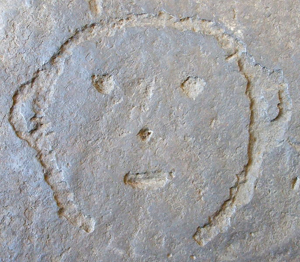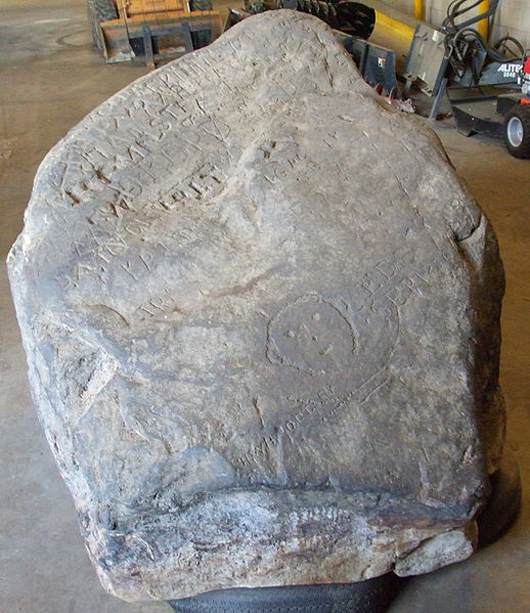
The historic “Indian Head Rock” bears numerous carvings of initials, names and a crude face and once jutted above the surface of the river, serving as a navigation marker for boaters. Kentucky officials believe that sandstone rock was raised from the Ohio River in 2007, and have been fighting for its return to the state every since.
Steve Shaffer of Ironton, Ohio, who led the expedition to lift it from the river – which he said was necessary to protect it – was charged with removing a protected archaeological object in Greenup County in Kentucky. However, that charge was dropped last week – even the prosecutor isn’t sure the rock sitting in a garage in Portsmouth, Ohio, is authentic.
“The problem is, I could not prove that this was indeed, beyond a reasonable doubt, the work of a Native American – or a pioneer,” Greenup County prosecutor Cliff Duvall said.
Meanwhile, a lawsuit filed by Kentucky Attorney General Jack Conway seeking the rock’s return to Kentucky is still pending in federal court.
Duvall said there’s no doubt the rock Shaffer pulled from the river has historic value to the area. What’s uncertain is whether the carvings were done by American Indians or early pioneers, or if are relatively more modern, such as from the 1800s or later, he said.
It’s also possible there is another rock somewhere upstream that “has a likeness of an Indian with a headdress of feathers,” Duvall said in court papers.
Shelley Catharine Johnson, a Conway spokeswoman, said the Kentucky attorney general’s office will be consulting with University of Kentucky archaeologists in deciding how to continue.
Nevertheless, attorney Mike Curtis, who represents Shaffer, said he doesn’t believe prosecutors could have proven Shaffer’s rock to be the “Indian Head Rock” talked about in history books. Curtis said the description of the rock given in more than one book describes the carving as that of a “colossal human head.”
That description does not fit with the rock involved in this case, Curtis said.
“I don’t think anyone knows,” Curtis said. “Based on the literature, it couldn’t be.”
Residents on both sides of the Ohio River had watched for the rock as far back as the 1800s. It had been located about 110 miles southeast of Cincinnati.
People often visited the rock – some even carved their initials into it – when the water level dropped and it became visible. The rock also bears a stick-figure carving of a face on it.
Some believe the smiley face and crude drawing of a house are part of an ancient petroglyph.
George Crothers, the director of the University of Kentucky’s William S. Webb Museum of Anthropology and Office of State Archaeology, said he believes the rock is the same one that was registered and protected by the state in 1986.
“Based on the descriptions that we have of it, I’m pretty confident,” Crothers said. “I was willing to testify to that fact.”
Kentucky Rep. Reginald Meeks, a Louisville Democrat who has monitored the rock developments,said Shaffer’s rock is protected under Kentucky law even if it turns out not to be the “Indian Head Rock.” Meeks said he hopes Conway moves ahead with the civil trial.
“It’s important that we send a message to individuals who routinely come to Kentucky and loot and remove and sell for profit our protected sites,” Meeks said. “Those who would come here to plunder, we need to send them a very strong message that this is not going to be tolerated.”
Copyright 2009 Associated Press. All rights reserved. This material may not be published, broadcast, rewritten, or redistributed.
AP-CS-08-02-09 1221EDT
ADDITIONAL IMAGES OF NOTE


